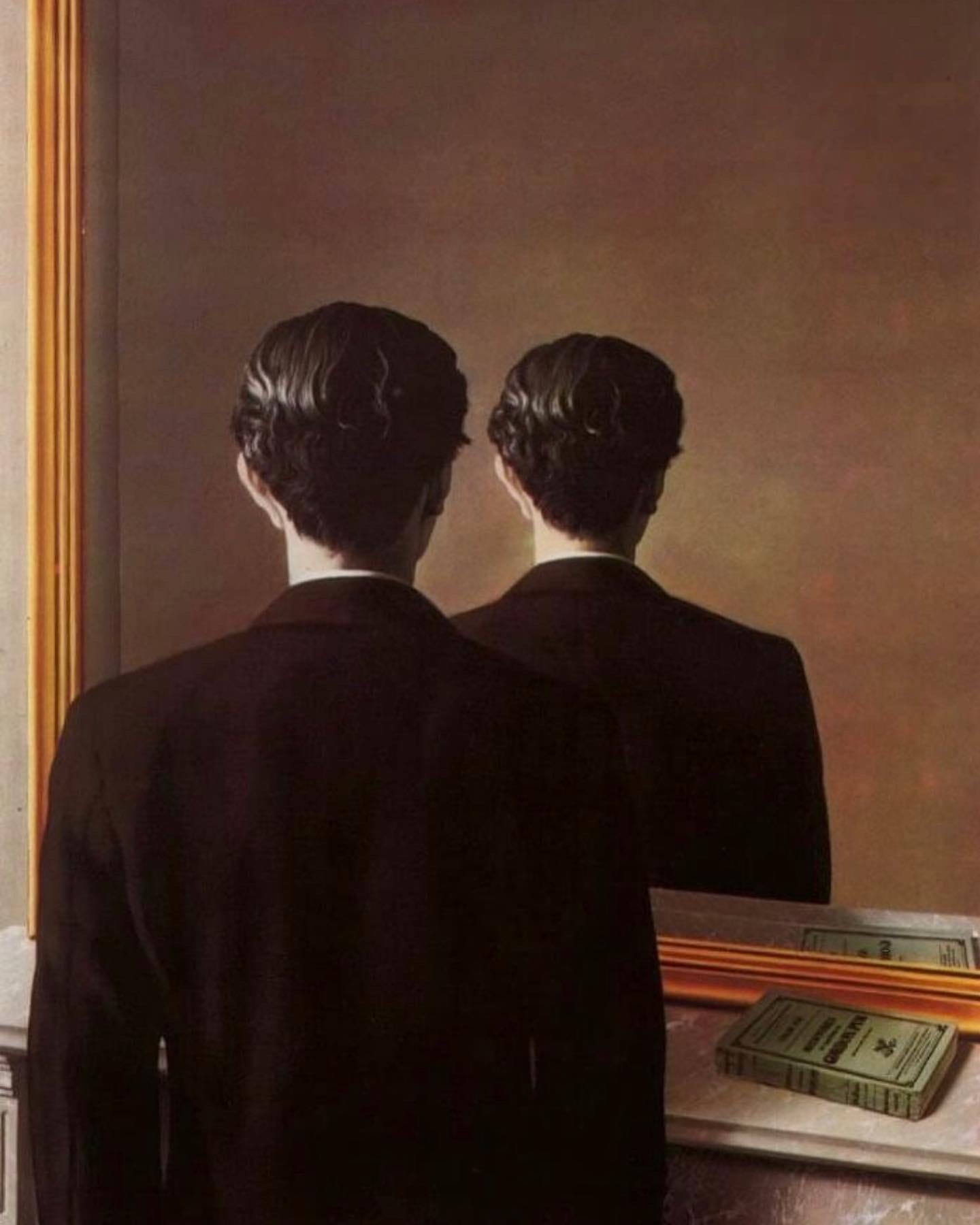The Uncanny and the Double
Magritte, Freud, and Dostoevsky
Not To Be Reproduced, by Renee Magritte (1937)
What does it really mean to “be yourself”? Is it possible to look at yourself objectively, without thinking of how you might appear to others?
These are just some of the questions raised by Magritte’s 1937 portrait, titled “Not To Be Reproduced”. We see a man looking at himself in the mirror, but all that he sees is the back of his head. In the reflection we can also detect a book, which upon closer inspection turns out to be by Edgar Allen Poe.
The idea of the “Doppelgänger” was also a key source of inspiration for Sigmund Freud’s theory of the Uncanny (Das Unheimliche). He wrote: “an uncanny effect often arises when the boundary between fantasy and reality is blurred, when we are faced with the reality of something that we have until now considered imaginary.”
In Dostoevsky’s novel “the double” (1846) we can find a similar observation about the uncanny nature of identity. One day, a young bureaucrat by the name of Golyadkin meets his double in the street and it sends him into a fit of confused terror: “Bow or not? Call back or not? Recognize him or not?” our hero wondered in indescribable anguish, “or pretend that I am not myself, but somebody else?”
This downward spiral causes many more doubles to appear, and by the end of the book he sees them everywhere and suffers a nervous breakdown. For another literary example, consider the the Portuguese novel “O Duplo” by Saramago, in which a man rents a movie and discovers a doppelgänger of himself amongst the actors.
And isn’t the most uncanny realization therefore precisely that we can conceive of ourselves as individuals at all? Suffice to say that without seeing ourselves, and seeing ourselves being seen in return, we could not function. As Sartre famously wrote, “Hell is other people”. But what if the self is the ultimate Other, that imaginary other which allows us to be grounded in the real? Sartre’s conclusion, therefore, is not just that hell is other people, but that the Self itself is hell.
Julian


